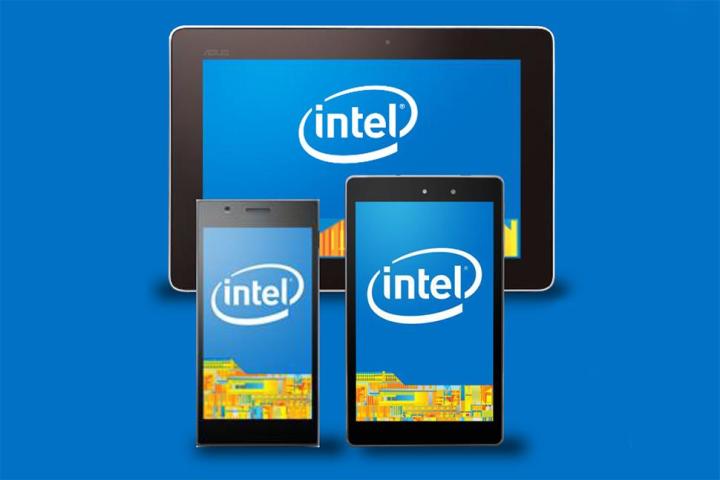
Intel Atom X3
As affordability is obviously a key concern in the fastest-growing markets for mobile we find Intel rounding out its portfolio with the entry-level Atom X3, which comes in 3G, 3G-R and LTE flavors. The 3G is a dual-core 1GHz CPU, the 3G-R is a quad-core clocked at 1.2GHz, and the LTE is a quad-core at 1.4GHz with bundled NFC support. All are 64 bit and paired with Mali graphics.
Intel has integrated solutions covering connectivity in terms of Wi-Fi, GPS, NFC, FM radio, and Bluetooth. It’s also on its third generation LTE modem now, so there’s growing confidence about the strength of the overall package. The focus has been on improving performance and Intel showed off a chart that claims light media editing on the x3 LTE is twice as quick as comparable Qualcomm or MediaTek SoCs.
It’s working with a number of partners including Asus, Jolla, Pegatron, and Foxconn as it aims to get the x3 into budget smartphones, phablets, and tablets. Interestingly the x3 LTE will support Android and Windows 10 Mobile.
Intel Atom X5 and X7
Aimed squarely at the mid-range and premium end of the market, and mostly at tablets, the Atom x5 and x7 combine 64-bit CPUs with Intel graphics. Intel promises twice the graphics performance in GFXBench 2.7 and a 50 percent bump in 3DMark Ice Storm Unlimited when compared to the previous generation’s Atom Z3795.
We can expect to see the X5 and X7 mostly in tablets, 2-in-1s, and notebooks with full Windows or, in some cases, Android. Despite the performance improvements power consumption is expected to be about the same as previous generations or comparable systems from competitors.
Intel has tried to add value with a new user experience which encompasses “RealSense” technology for better photo editing and depth in 3D imaging, Pro WiDi for wireless conference rooms, and True Key for multi factor authentication to secure devices. We’ve already seen this in Dell’s Venue 8 7000, a recent Atom-based tablet that won our Editor’s Choice award.
A new strategy
Last year Intel engaged in some “contra revenue” techniques to hit its goal of 40 million tablets, effectively burning through millions of dollars in an attempt to secure a share of mobile, by selling chips to tablet OEMs at below cost. The strategy let Intel beat its target, as 46 million tablets with the company’s shipped last year. This year it aims to scale back that strategy with Cherry Trail, but there’s a clear understanding that it is still very much playing catch up.
The introduction of the entry-level X3 gives it a portfolio that covers every market segment and shows an understanding of the importance of China and other emerging markets. It’s also offering OEMs customizable reference designs that enable them to hit the market in three months. It will be interesting to see if Intel can close the gap further in the year ahead.
Editors' Recommendations
- Intel at CES 2022: New 12th Gen processors, Intel Arc GPU, and more
- New Intel Alder Lake benchmarks leak, revealing 14- and 16-core processors
- Intel CES 2021 highlights: New laptop processors, desktop CPUs, and more
- New line of Lenovo Chromebooks feature Intel processors and eye-catching colors



